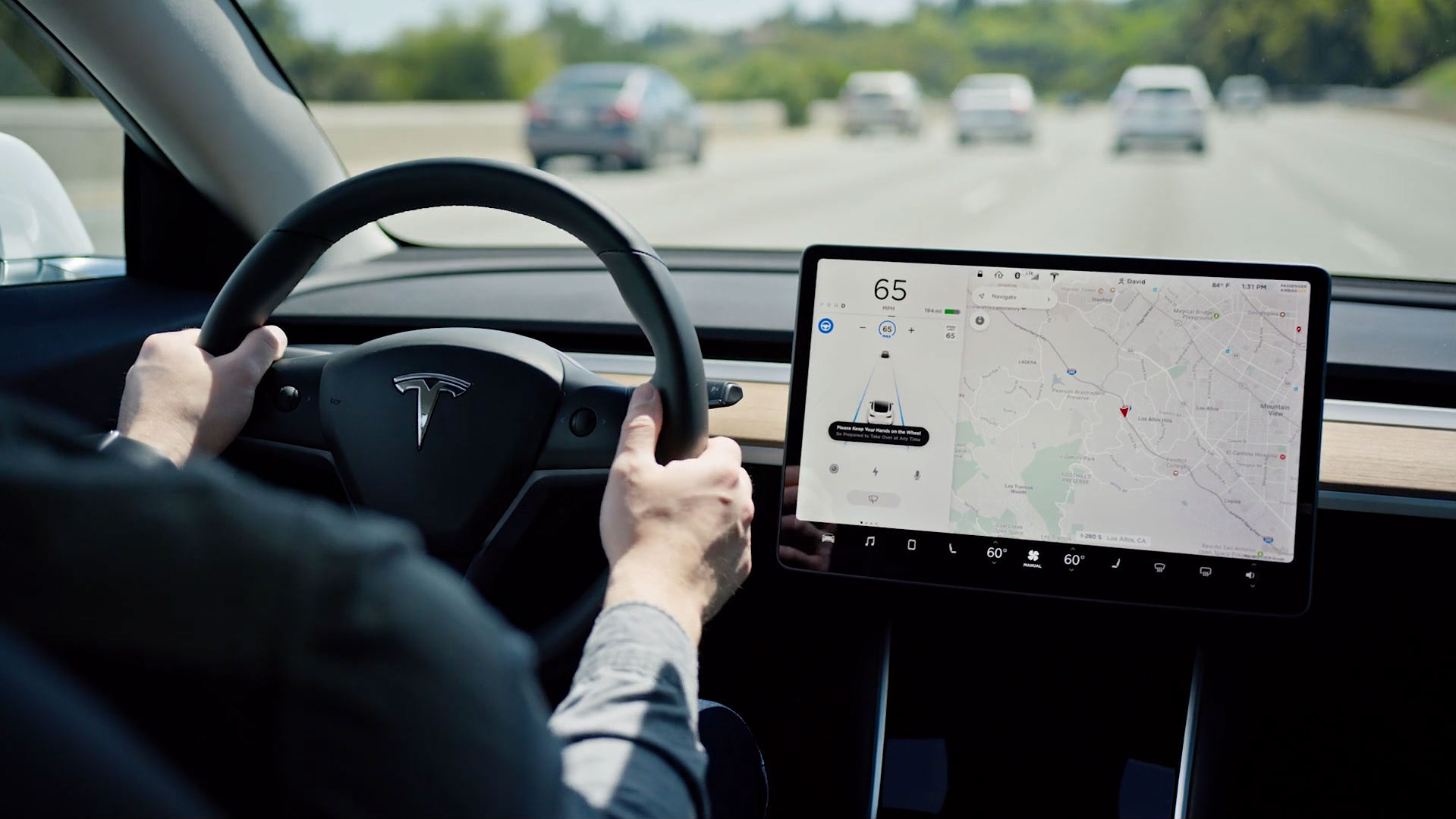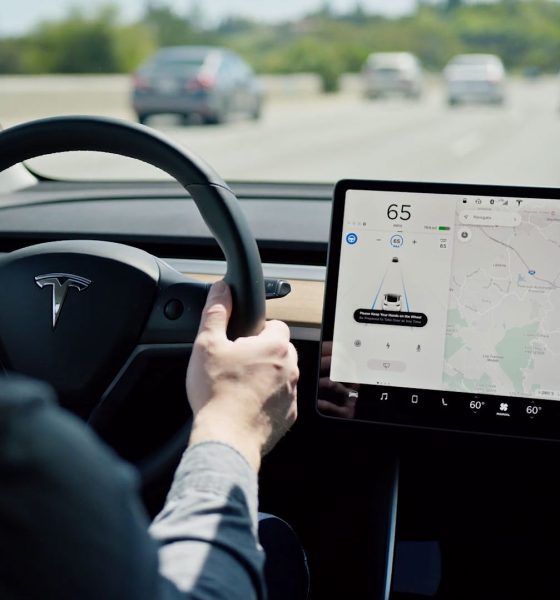

News
Good news for Tesla: Consumers are ready for the future of self-driving cars, says study
Tesla’s Autopilot features frequently make headlines when the latest advancements are released to its all-electric fleet, and media attention from its and other groups’ successes looks to have resulted in a consumer base that’s excited for autonomous cars. A survey of more than 5,500 consumers and 280 auto executives by Capgemini, a consulting group, concluded that automotive consumers are ready for the future of self-driving cars, and 59% of them are even waiting with anticipation.
Capgemini’s study set out to understand more than just whether consumers were ready for self-driving advancements. It also sought to determine the level of understanding those same consumers had for what driverless cars would mean in the bigger picture and what their expectations were for the feature as it applied to their own lives. Positive indications were given in this area as well. Over 50% of study participants said they would trust autonomous cars to make sound decisions during unexpected situations and drop off or pick up non-driving close friends or family members. Nearly 50% would trust their cars to run an errand on their behalf.
According to Capgemini’s results, there’s even more good news for companies like Tesla and Waymo who are hedging their futures on autonomy’s success. Consumers are not only excited for what’s being promised, but they’re also willing to pay a premium for the feature. 56% of study participants said they’d be willing to pay a premium of up to 20% over their current budget for a self-driving car. Tesla’s current price for its Full Self-Driving software looks to be matched to this finding. Priced as a $6,000 option paired with a $39,000 Model 3 Standard Range Plus, Tesla’s customers are already willing to pay a 15% premium in anticipation of a feature that’s not yet available.


Another part of the study pointed to the importance of the consumer experience when it comes to self-driving cars. The prime benefit of the technology isn’t simply to designate a task from a human to a computer – it needs to have perks like convenience and fun added into the mix. “[Companies]…must develop an ecosystem of services to complement consumers’ experience while in a self-driving vehicle,” the study’s summary remarked. 57% of consumers in the survey said they planned to spend their time indulging in entertainment activities in their cars once self-driving was available. This is an area where Tesla can really make its mark.
Tesla ownership already offers several fun and entertaining activities. Internet browsing, music streaming, amusing Easter Eggs, and in-car games are already part of its user experience, and those features will likely be expanded much further once drivers no longer need to keep their attention on the road. Features like “Romance Mode” could be reimagined to include scenic drives, for instance, or TeslAtari could incorporate environmental cues into game play akin to “I Spy” or something similar.
Fully autonomous vehicles still have a long road ahead of both development and regulatory approvals, but knowing there’s a consumer market ready and willing to participate in the future the technology is promising is perhaps enough to keep things moving long enough for it to succeed.

News
Tesla FSD fleet is nearing 7 billion total miles, including 2.5 billion city miles
As can be seen on Tesla’s official FSD webpage, vehicles equipped with the system have now navigated over 6.99 billion miles.

Tesla’s Full Self-Driving (Supervised) fleet is closing in on almost 7 billion total miles driven, as per data posted by the company on its official FSD webpage.
These figures hint at the massive scale of data fueling Tesla’s rapid FSD improvements, which have been quite notable as of late.
FSD mileage milestones
As can be seen on Tesla’s official FSD webpage, vehicles equipped with the system have now navigated over 6.99 billion miles. Tesla owner and avid FSD tester Whole Mars Catalog also shared a screenshot indicating that from the nearly 7 billion miles traveled by the FSD fleet, more than 2.5 billion miles were driven inside cities.
City miles are particularly valuable for complex urban scenarios like unprotected turns, pedestrian interactions, and traffic lights. This is also the difference-maker for FSD, as only complex solutions, such as Waymo’s self-driving taxis, operate similarly on inner-city streets. And even then, incidents such as the San Francisco blackouts have proven challenging for sensor-rich vehicles like Waymos.
Tesla’s data edge
Tesla has a number of advantages in the autonomous vehicle sector, one of which is the size of its fleet and the number of vehicles training FSD on real-world roads. Tesla’s nearly 7 billion FSD miles then allow the company to roll out updates that make its vehicles behave like they are being driven by experienced drivers, even if they are operating on their own.
So notable are Tesla’s improvements to FSD that NVIDIA Director of Robotics Jim Fan, after experiencing FSD v14, noted that the system is the first AI that passes what he described as a “Physical Turing Test.”
“Despite knowing exactly how robot learning works, I still find it magical watching the steering wheel turn by itself. First it feels surreal, next it becomes routine. Then, like the smartphone, taking it away actively hurts. This is how humanity gets rewired and glued to god-like technologies,” Fan wrote in a post on X.
News
Tesla starts showing how FSD will change lives in Europe
Local officials tested the system on narrow country roads and were impressed by FSD’s smooth, human-like driving, with some calling the service a game-changer for everyday life in areas that are far from urban centers.

Tesla has launched Europe’s first public shuttle service using Full Self-Driving (Supervised) in the rural Eifelkreis Bitburg-Prüm region of Germany, demonstrating how the technology can restore independence and mobility for people who struggle with limited transport options.
Local officials tested the system on narrow country roads and were impressed by FSD’s smooth, human-like driving, with some calling the service a game-changer for everyday life in areas that are far from urban centers.
Officials see real impact on rural residents
Arzfeld Mayor Johannes Kuhl and District Administrator Andreas Kruppert personally tested the Tesla shuttle service. This allowed them to see just how well FSD navigated winding lanes and rural roads confidently. Kruppert said, “Autonomous driving sounds like science fiction to many, but we simply see here that it works totally well in rural regions too.” Kuhl, for his part, also noted that FSD “feels like a very experienced driver.”
The pilot complements the area’s “Citizen Bus” program, which provides on-demand rides for elderly residents who can no longer drive themselves. Tesla Europe shared a video of a demonstration of the service, highlighting how FSD gives people their freedom back, even in places where public transport is not as prevalent.
What the Ministry for Economic Affairs and Transport says
Rhineland-Palatinate’s Minister Daniela Schmitt supported the project, praising the collaboration that made this “first of its kind in Europe” possible. As per the ministry, the rural rollout for the service shows FSD’s potential beyond major cities, and it delivers tangible benefits like grocery runs, doctor visits, and social connections for isolated residents.
“Reliable and flexible mobility is especially vital in rural areas. With the launch of a shuttle service using self-driving vehicles (FSD supervised) by Tesla in the Eifelkreis Bitburg-Prüm, an innovative pilot project is now getting underway that complements local community bus services. It is the first project of its kind in Europe.
“The result is a real gain for rural mobility: greater accessibility, more flexibility and tangible benefits for everyday life. A strong signal for innovation, cooperation and future-oriented mobility beyond urban centers,” the ministry wrote in a LinkedIn post.
News
Tesla China quietly posts Robotaxi-related job listing
Tesla China is currently seeking a Low Voltage Electrical Engineer to work on circuit board design for the company’s autonomous vehicles.

Tesla has posted a new job listing in Shanghai explicitly tied to its Robotaxi program, fueling speculation that the company is preparing to launch its dedicated autonomous ride-hailing service in China.
As noted in the listing, Tesla China is currently seeking a Low Voltage Electrical Engineer to work on circuit board design for the company’s autonomous vehicles.
Robotaxi-specific role
The listing, which was shared on social media platform X by industry watcher @tslaming, suggested that Tesla China is looking to fill the role urgently. The job listing itself specifically mentions that the person hired for the role will be working on the Low Voltage Hardware team, which would design the circuit boards that would serve as the nervous system of the Robotaxi.
Key tasks for the role, as indicated in the job listing, include collaboration with PCB layout, firmware, mechanical, program management, and validation teams, among other responsibilities. The role is based in Shanghai.
China Robotaxi launch
China represents a massive potential market for robotaxis, with its dense urban centers and supportive policies in select cities. Tesla has limited permission to roll out FSD in the country, though despite this, its vehicles have been hailed as among the best in the market when it comes to autonomous features. So far, at least, it appears that China supports Tesla’s FSD and Robotaxi rollout.
This was hinted at in November, when Tesla brought the Cybercab to the 8th China International Import Expo (CIIE) in Shanghai, marking the first time that the autonomous two-seater was brought to the Asia-Pacific region. The vehicle, despite not having a release date in China, received a significant amount of interest among the event’s attendees.








